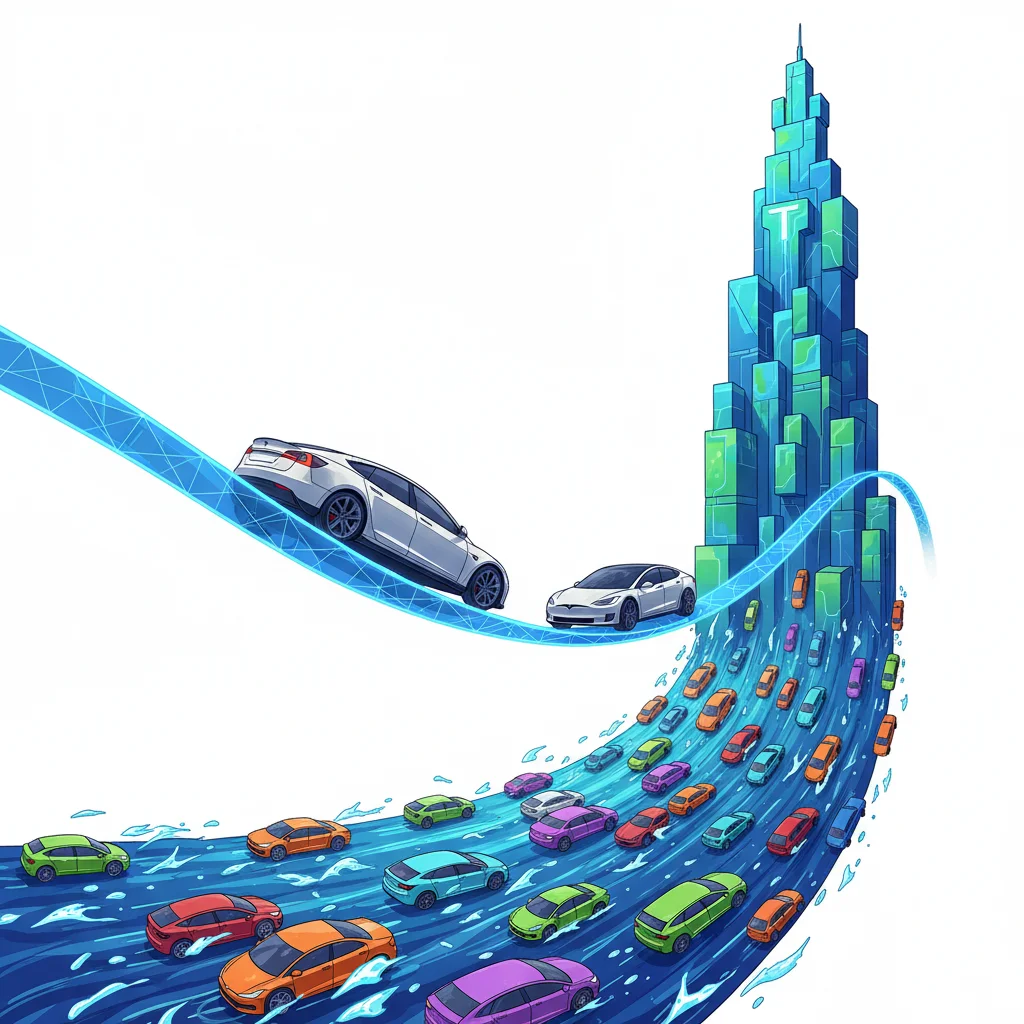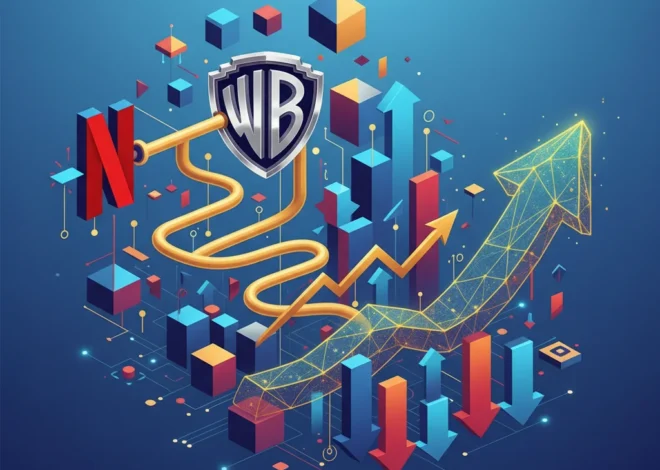
Tesla’s Trillion-Dollar Tightrope: Can a Two-Model Empire Withstand the Global EV Onslaught?
In the exclusive realm of trillion-dollar companies, Tesla has long stood as a monument to disruption. It didn’t just build an electric car; it built an ecosystem, a brand, and a vision of the future that captivated the stock market and reshaped the automotive world. For years, Elon Musk’s powerhouse has seemed untouchable, its valuation soaring into the stratosphere on the promise of relentless innovation and market dominance. But the ground beneath this towering giant is starting to shift. A formidable challenger has emerged, not from Detroit or Germany, but from Shenzhen, China. And it’s forcing investors, executives, and market analysts to ask a critical question: Can Tesla maintain its trillion-dollar valuation while relying almost exclusively on just two aging, albeit wildly successful, models?
The challenge comes from BYD (Build Your Dreams), a company that has rapidly transformed from a battery manufacturer into the world’s largest EV producer by volume. This isn’t just another legacy automaker dipping its toes into electric waters; this is a vertically integrated behemoth with a fundamentally different strategy. As the battle for the future of mobility intensifies, the clash between Tesla’s focused, high-margin approach and BYD’s sprawling, volume-driven assault represents a pivotal moment in the global economy and a fascinating case study for anyone involved in investing.
The Two Pillars of a Trillion-Dollar Kingdom
To understand the current predicament, one must appreciate the genius of Tesla’s strategy to date. The company’s ascent was built on the back of two vehicles: the Model 3 sedan and the Model Y midsize SUV. By concentrating its resources on a limited lineup, Tesla achieved unprecedented manufacturing efficiencies, most notably through its “gigacasting” process, which dramatically simplified production and lowered costs. This focus allowed the company to scale rapidly, build a cult-like brand, and generate the kind of profit margins that traditional carmakers could only dream of.
The Model Y, in particular, became a global phenomenon, rocketing to the top of sales charts not just for EVs, but for all vehicles in many regions. This success reinforced the narrative that Tesla wasn’t just a car company but a tech giant—a narrative that has been fundamental to its sky-high valuation. However, this hyper-focus is a double-edged sword. In the fast-paced automotive world, product cycles are relentless. The designs of the Model 3 and Y are now several years old, and while they receive over-the-air software updates, the physical product is becoming increasingly familiar. This product concentration creates significant risk, a core concern in any finance portfolio, leaving Tesla vulnerable to competitors who can offer novelty, variety, and aggressive pricing.
Enter the Dragon: BYD’s Multi-Pronged Assault
While Tesla perfected its two-model strategy, BYD was playing a different game entirely. Backed by Warren Buffett’s Berkshire Hathaway, BYD leveraged its deep expertise in battery manufacturing—the single most expensive component of an EV—to build a sprawling empire. Unlike Tesla, which aims for the premium segment, BYD attacks the market from all angles, offering a wide array of vehicles from the budget-friendly Seagull (which sells for around $11,000 in China) to the premium Yangwang U8 SUV.
The most direct threat to Tesla’s dominance comes from models like the BYD Seal U (known as the Song Plus in China). This vehicle competes squarely with the Tesla Model Y, often at a significantly lower price point while offering competitive range, technology, and a design that is winning over consumers globally. According to the Financial Times, BYD’s global sales have been surging, highlighting its growing appeal outside of its home market (source). This isn’t a theoretical threat; it’s a commercial reality unfolding in showrooms from Shanghai to Munich.
To illustrate the competitive pressure, let’s compare the workhorse of Tesla’s lineup with its direct rival from BYD.
| Feature | Tesla Model Y (Long Range) | BYD Seal U (Design) |
|---|---|---|
| Approx. Starting Price (EU) | ~€55,990 | ~€44,990 |
| Est. Range (WLTP) | Up to 533 km | Up to 500 km |
| Battery Technology | NMC/LFP (Supplier Dependent) | LFP (BYD Blade Battery) |
| Key Selling Points | Supercharger Network, Autopilot, Minimalist Design, Brand Cachet | Price-to-Value Ratio, Rotating Touchscreen, Vehicle-to-Load Tech |
| Strategic Advantage | Proven software ecosystem and high-speed charging infrastructure. | Cost control via in-house battery production and supply chain. |
Is Tesla’s Moat Deep Enough?
Defenders of Tesla’s valuation argue that comparing it to BYD on a car-for-car basis misses the point. Tesla’s value, they contend, is not in the metal, but in the code and the network. The company’s true “moat” consists of several key elements:
- The Supercharger Network: Still widely considered the most reliable and widespread fast-charging network, it provides a powerful lock-in effect for customers.
- Software and Data: Tesla’s operating system and its ability to collect vast amounts of real-world driving data are seen as a critical advantage in the race to develop autonomous driving. This positions it more like a financial technology company, monetizing a platform rather than just selling a product.
- Brand Power: Despite recent challenges, the Tesla brand remains incredibly powerful, synonymous with the very idea of the modern electric vehicle.
However, the durability of this moat is being tested. Competitors are rapidly building out their charging infrastructure, often through partnerships. The North American Charging Standard (NACS), once a Tesla exclusive, is now being adopted by other automakers, potentially diluting one of its key advantages. Furthermore, while the promise of Full Self-Driving (FSD) is a cornerstone of the bullish thesis for the stock, its timeline to widespread, regulatory-approved reality remains uncertain, making its contribution to the company’s current valuation a subject of intense debate in trading circles.
A Battle on the Global Economic Stage
This corporate rivalry does not exist in a vacuum. It is a proxy for the larger geopolitical and economic competition between the United States and China. The global EV market is a key battleground in the fight for technological and manufacturing supremacy in the 21st century. Governments are deeply involved through subsidies, tariffs, and industrial policy. The recent Inflation Reduction Act in the U.S., for example, is explicitly designed to build a domestic EV supply chain and counter China’s dominance, a fact that directly impacts the competitive landscape (source).
BYD’s vertical integration gives it a powerful shield against the supply chain disruptions that have plagued the industry. In an increasingly fragmented global economy, controlling your own supply of critical components like batteries is a decisive strategic advantage. Ensuring the integrity of these complex supply chains—a problem some in the fintech world are exploring solutions for with technologies like blockchain—is paramount for sustained production and cost control.
The Verdict: A Tech Titan at a Crossroads
Can Tesla remain a trillion-dollar company on just two models? The answer depends entirely on whether you view it as a car company or a technology and AI company. If it’s the former, its current valuation looks precarious in the face of BYD’s onslaught. The principles of economics suggest that intense competition will inevitably put pressure on prices and margins, eroding the very foundation of Tesla’s profitability.
If, however, Tesla successfully transitions into a company whose primary products are autonomous software, robotics, and energy solutions, then its current vehicle lineup is merely the vessel for a much larger platform play. The battle with BYD is therefore more than just a fight for market share; it’s a race against time. Tesla must deliver on its futuristic promises before its present-day cash cow, the automotive division, is overwhelmed by a sea of more affordable, varied, and rapidly improving competition.
For those engaged in the stock market, the path forward is fraught with both risk and opportunity. The coming 24 months will be a critical test of Tesla’s strategy, brand loyalty, and technological prowess. The trillion-dollar question remains open, and the world is watching to see if the two pillars of Elon Musk’s empire can withstand the storm.


